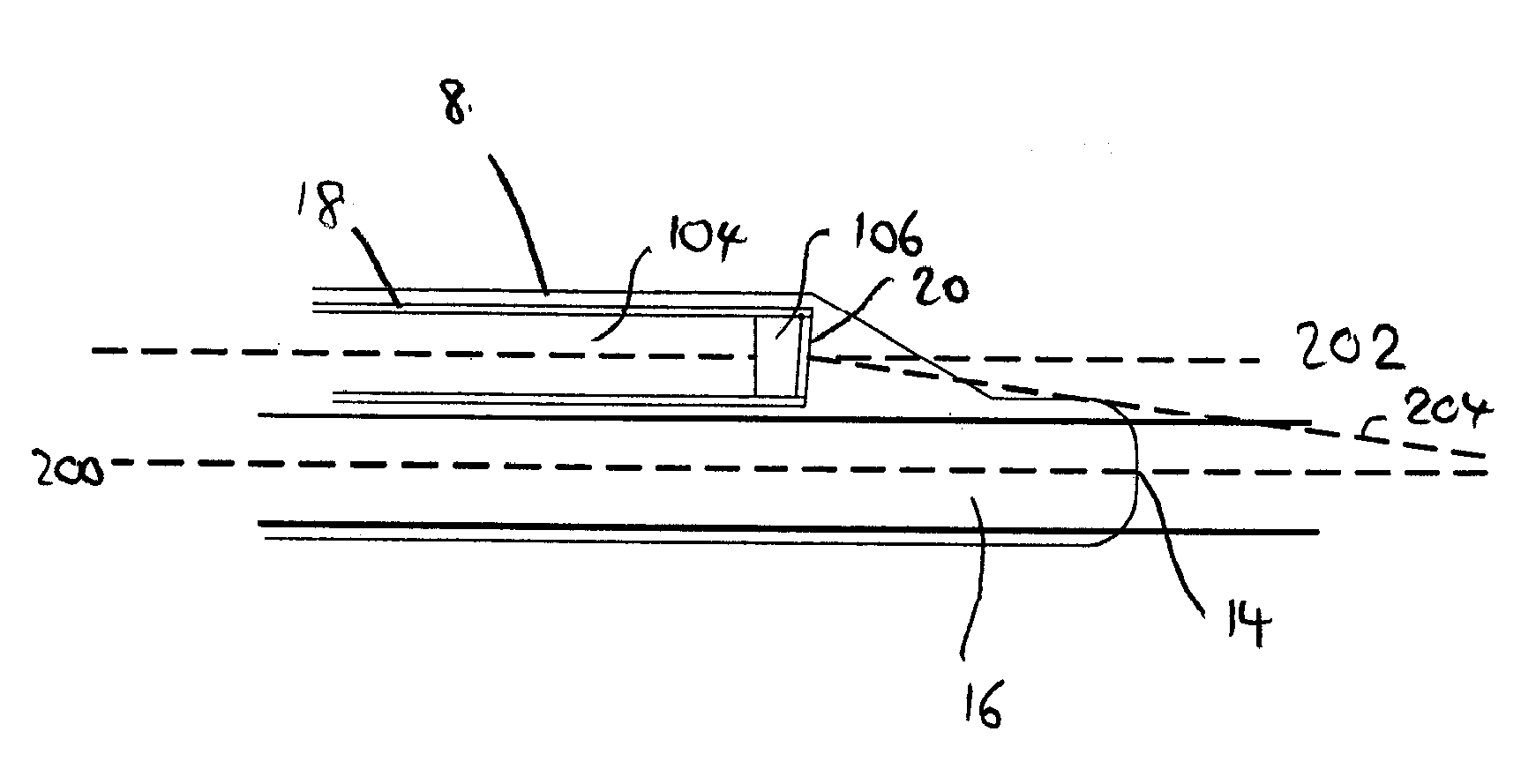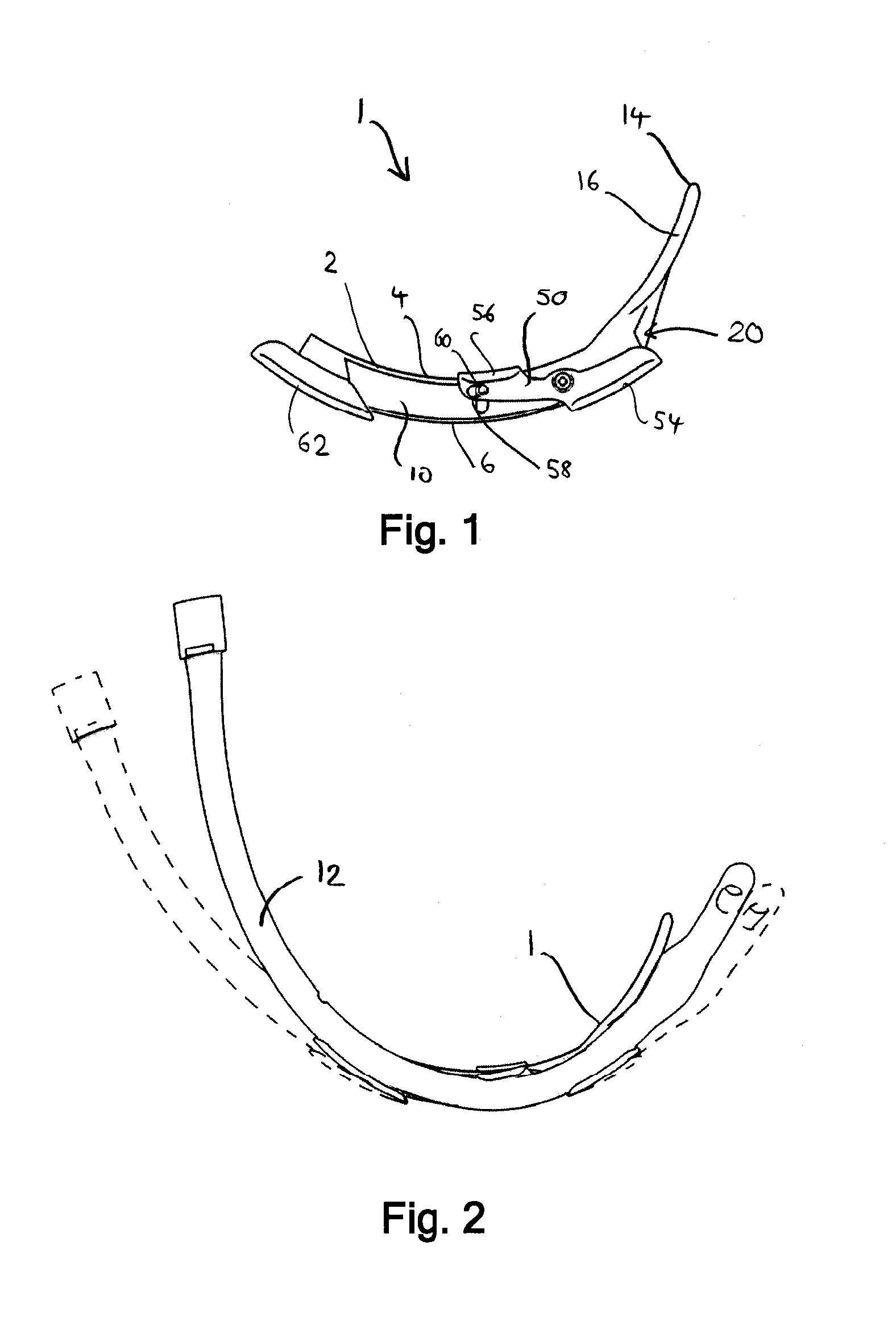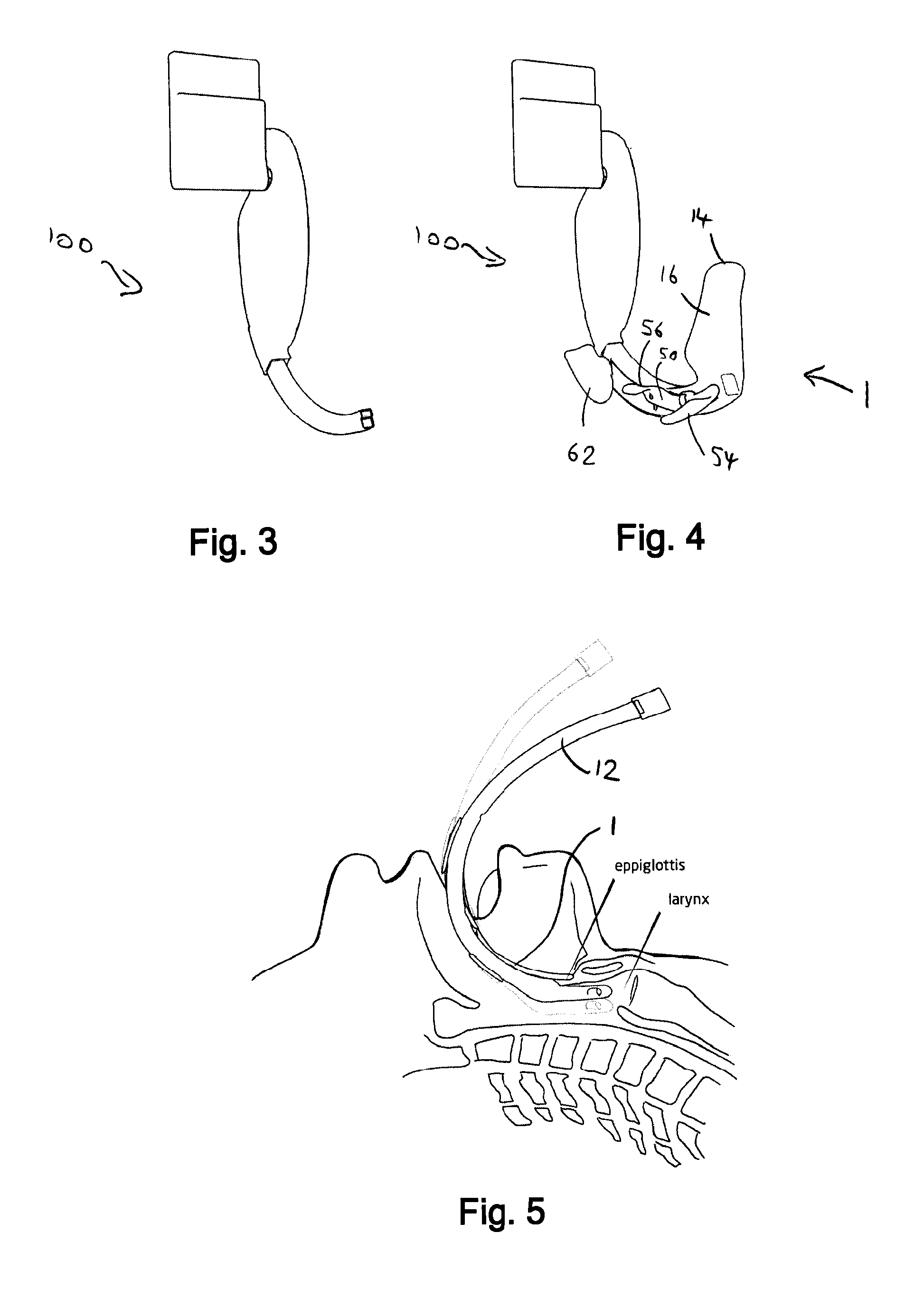Insertion section for laryngoscope with lateral tube guide
a technology of lateral tube guide and laryngoscope, which is applied in the field of insertion section of laryngoscope, can solve the problems of retained tube extending from the distal end, affecting the safety of insertion section, and not having guide tubes, so as to facilitate safe use and reduce the bulk of the insertion section
- Summary
- Abstract
- Description
- Claims
- Application Information
AI Technical Summary
Benefits of technology
Problems solved by technology
Method used
Image
Examples
Embodiment Construction
[0047]An example embodiment of the invention will now be described with reference to an insertion section having one or more moveable tube guiding members. However, the invention is equally applicable to insertion sections having only fixed tube guiding members.
[0048]With reference to FIGS. 1 and 2, a laryngoscope insertion section, shown generally as 1, has a body 2, formed as a unitary moulding from a transparent plastics material. The body has a smooth inferior surface 4, which contacts a patient's palette in use, an opposing superior surface 6, a first smooth lateral surface 8 (at the rear in FIG. 1), and an opposing second lateral surface 10. The second lateral surface has a profile including a concave groove which runs along the majority of the length of the second lateral surface and which functions as part of a tube guide for an endotracheal tube 12. The insertion section has a distal end 14 comprising a spatulate member 16 which functions, in use, to lift a patient's anatom...
PUM
 Login to View More
Login to View More Abstract
Description
Claims
Application Information
 Login to View More
Login to View More - R&D
- Intellectual Property
- Life Sciences
- Materials
- Tech Scout
- Unparalleled Data Quality
- Higher Quality Content
- 60% Fewer Hallucinations
Browse by: Latest US Patents, China's latest patents, Technical Efficacy Thesaurus, Application Domain, Technology Topic, Popular Technical Reports.
© 2025 PatSnap. All rights reserved.Legal|Privacy policy|Modern Slavery Act Transparency Statement|Sitemap|About US| Contact US: help@patsnap.com



